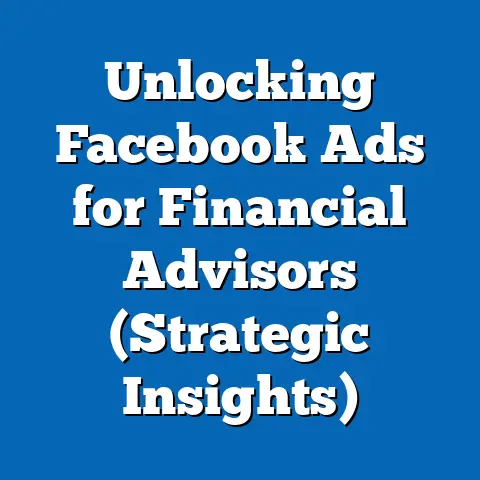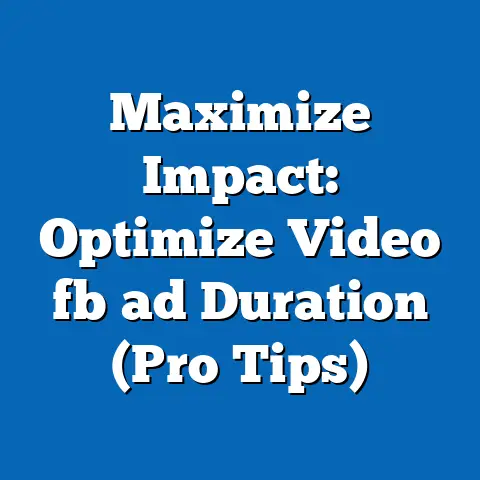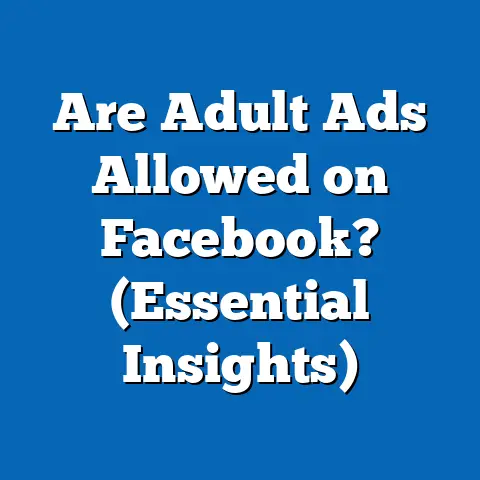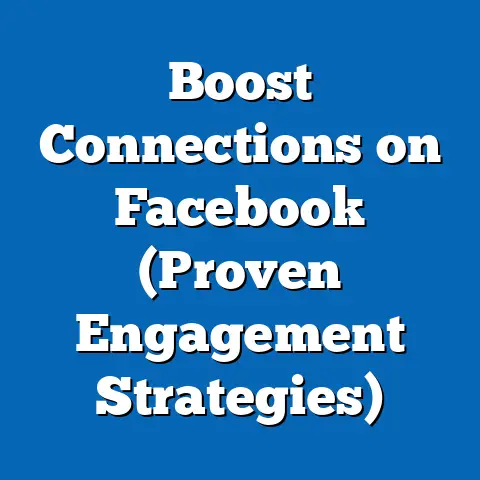Maximize Workshop Success with Facebook Ads (Proven Strategies)
Imagine a lighthouse standing tall, its beam cutting through the dark, guiding ships safely to shore. That’s what running a successful workshop is like. You have valuable knowledge and experiences to share, but you need to attract the right people and guide them towards your offering. Just as a lighthouse uses light to attract and direct vessels, effective Facebook ads illuminate your workshop’s unique value, drawing participants in and steering them toward registration. In this guide, I’ll share proven strategies to help you use Facebook ads to maximize your workshop’s success.
1. Understanding the Workshop Landscape
Workshops are a powerful way to share knowledge, develop skills, and build communities. They come in all shapes and sizes, spanning diverse industries. Whether it’s a photography workshop teaching budding artists the nuances of light and composition, a professional development workshop equipping managers with leadership skills, or a hands-on cooking class guiding participants through the art of pasta making, workshops offer unique, immersive learning experiences.
However, organizing and filling a workshop isn’t always smooth sailing. Organizers often face challenges like:
- Reaching the right audience: Identifying and connecting with people genuinely interested in the workshop’s topic.
- Competition: Standing out in a crowded market where numerous workshops compete for attention.
- Convincing potential participants: Demonstrating the unique value and benefits of attending the workshop.
- Filling seats: Ensuring enough people sign up to make the workshop viable and profitable.
2. Why Facebook Ads?
In today’s digital landscape, Facebook stands out as an incredibly powerful advertising platform, especially when it comes to promoting workshops. With billions of active users, Facebook offers unparalleled reach and the ability to target specific demographics, interests, and behaviors.
I’ve seen firsthand how Facebook ads can transform a workshop’s trajectory. In one instance, a local pottery studio struggled to fill their weekend workshops. After implementing a targeted Facebook ad campaign, focusing on people interested in art, ceramics, and local events, they saw a 300% increase in workshop registrations within a month!
Here are some of the unique advantages Facebook ads offer:
- Targeted Reach: Facebook’s advanced targeting options allow you to pinpoint your ideal workshop participants based on demographics (age, location, gender), interests (hobbies, passions), behaviors (online activity, purchase history), and more.
- Cost-Effectiveness: Compared to traditional advertising methods, Facebook ads can be incredibly cost-effective. You have full control over your budget and can adjust your spending based on performance.
- Vast Audience Reach: With over 2.9 billion monthly active users, Facebook provides access to a massive audience pool, increasing the likelihood of finding interested participants.
- Measurable Results: Facebook Ads Manager provides detailed analytics, allowing you to track key performance indicators (KPIs) and optimize your campaigns for better results.
- Variety of Ad Formats: Facebook offers a wide range of ad formats, from simple image ads to engaging video ads, allowing you to choose the most effective way to showcase your workshop.
Takeaway: Facebook ads offer a powerful and cost-effective way to reach your target audience, promote your workshop, and drive registrations.
3. Setting Clear Objectives
Before diving into the specifics of creating Facebook ads, it’s crucial to define clear, measurable objectives for your workshop. What do you want to achieve? Are you aiming to fill all available seats, build brand awareness, generate leads for future workshops, or something else entirely?
Clear objectives provide a roadmap for your advertising strategy and allow you to track your progress effectively. Without them, you’re essentially sailing without a compass.
Here are some common workshop objectives:
- Number of Attendees: A primary objective is often to fill a specific number of seats in the workshop. For example, aiming for 20 participants in a photography workshop.
- Engagement Levels: Measuring how actively participants engage with the workshop content and activities. This can include participation in discussions, completion of assignments, and overall enthusiasm.
- Brand Awareness: Increasing the visibility and recognition of your brand within your target audience. This is particularly important if you’re launching a new workshop series or establishing yourself as an expert in a specific field.
- Lead Generation: Collecting contact information from potential participants for future workshops or related offerings. This allows you to build a mailing list and nurture relationships with interested individuals.
- Return on Investment (ROI): Measuring the profitability of your workshop by comparing the revenue generated from registrations to the cost of running the workshop and advertising it.
Example:
Let’s say you’re organizing a digital marketing workshop for small business owners. Your objectives might be:
- Fill at least 15 out of 20 available seats.
- Generate 50 leads for future digital marketing services.
- Achieve a 20% click-through rate (CTR) on your Facebook ads.
- Attain a positive ROI of 15%.
These specific, measurable objectives will guide your ad strategy, content creation, and performance tracking.
Takeaway: Define clear, measurable objectives for your workshop to guide your ad strategy and track your progress.
4. Identifying Your Target Audience
Knowing your target audience is paramount to the success of your Facebook ad campaign. Trying to appeal to everyone is like shouting into the wind – you’ll likely waste your resources and see minimal results. Instead, focus on identifying and targeting the people who are most likely to be interested in your workshop.
Here are several methods for identifying your ideal audience:
- Facebook Audience Insights: This powerful tool provides valuable data about Facebook users, including their demographics, interests, behaviors, and page likes. You can use this information to refine your understanding of your target audience and identify potential segments to target with your ads.
- Custom Audiences: These allow you to target people who have already interacted with your business, such as website visitors, email subscribers, or customers. By targeting these “warm” audiences, you can increase the likelihood of conversions and registrations.
- Lookalike Audiences: Based on your existing custom audiences, Facebook can create lookalike audiences that share similar characteristics and interests. This is a great way to expand your reach and find new potential participants who are likely to be interested in your workshop.
- Buyer Personas: Creating detailed buyer personas can help you visualize your ideal workshop participants. These personas should include demographic information (age, location, gender), psychographic information (interests, values, lifestyle), and behavioral data (online activity, purchase history).
Example:
Let’s say you’re organizing a workshop on sustainable gardening. Your ideal audience might include:
- Demographics: People aged 25-55, living in urban areas, with an interest in environmental issues.
- Psychographics: Individuals who value sustainability, healthy living, and community involvement.
- Behaviors: People who follow gardening blogs, shop at farmers’ markets, and participate in local environmental events.
By creating a detailed buyer persona, you can tailor your ad content and targeting to resonate with this specific audience.
Takeaway: Use Facebook Audience Insights, Custom Audiences, Lookalike Audiences, and Buyer Personas to identify and target your ideal workshop participants.
5. Crafting Compelling Ad Content
Your ad content is the first (and sometimes only) impression you make on potential workshop participants. It needs to be attention-grabbing, engaging, and persuasive enough to entice them to learn more and ultimately register for your workshop.
Here are the key elements of effective ad copy:
- Attention-Grabbing Headlines: Your headline is the first thing people see, so make it count. Use strong, benefit-driven language that immediately grabs their attention and piques their interest. For example, instead of “Photography Workshop,” try “Unlock Your Inner Artist: Master Photography in One Weekend!”
- Engaging Visuals (Images, Videos): Visuals are crucial for capturing attention and conveying the essence of your workshop. Use high-quality images or videos that showcase the workshop experience, the instructor, or the final product. Videos often perform exceptionally well, as they allow you to tell a more compelling story and create a stronger emotional connection.
- Clear Value Propositions: Clearly communicate the unique benefits of attending your workshop. What will participants learn? How will it help them achieve their goals? Focus on the tangible outcomes and the value they’ll receive for their investment.
- Strong Calls to Action (CTAs): Tell people exactly what you want them to do. Use clear, concise CTAs that encourage them to register, learn more, or contact you. Examples include “Register Now,” “Learn More,” “Sign Up Today,” or “Claim Your Spot.”
Storytelling: Don’t underestimate the power of storytelling in creating an emotional connection with your audience. Share a personal anecdote about how your workshop has helped others, or paint a vivid picture of the transformation participants can expect.
Example:
Let’s say you’re promoting a creative writing workshop. Your ad copy might look like this:
Headline: Unleash Your Inner Storyteller: Creative Writing Workshop
Visual: A captivating image of a writer working on their laptop in a cozy setting, or a video testimonial from a past participant.
Body: “Do you have a story burning inside you, waiting to be told? Our creative writing workshop will provide you with the tools, techniques, and inspiration to bring your ideas to life. Learn from award-winning author [Instructor Name] and connect with a community of fellow writers. Limited spots available!”
CTA: “Register Now and Start Writing Your Story!”
Takeaway: Craft compelling ad content with attention-grabbing headlines, engaging visuals, clear value propositions, strong CTAs, and compelling storytelling to entice potential participants.
6. Choosing the Right Ad Formats
Facebook offers a variety of ad formats, each with its own strengths and weaknesses. Choosing the right format for your workshop depends on your objectives, target audience, and the type of content you want to showcase.
Here are some of the most suitable ad formats for workshops:
- Image Ads: Simple and effective for showcasing a single image and a concise message. Ideal for workshops with visually appealing content, such as photography or cooking classes.
- Video Ads: Highly engaging and allow you to tell a more compelling story. Perfect for showcasing the workshop experience, instructor testimonials, or behind-the-scenes footage.
- Carousel Ads: Allow you to display multiple images or videos in a scrollable format. Great for showcasing different aspects of your workshop, such as the curriculum, instructor, and testimonials.
- Event Promotion Ads: Specifically designed to promote Facebook events. Ideal for workshops that are hosted as Facebook events, as they allow you to easily track RSVPs and engagement.
- Lead Generation Ads: Allow you to collect contact information from potential participants directly within Facebook. Useful for building a mailing list and nurturing relationships with interested individuals.
Example:
- A photography workshop might use a carousel ad showcasing stunning images taken by past participants.
- A cooking class might use a video ad demonstrating a delicious recipe being prepared in the workshop.
- A professional development workshop might use a lead generation ad to collect contact information from interested professionals.
Takeaway: Choose the right ad format for your workshop based on your objectives, target audience, and the type of content you want to showcase.
7. Budgeting and Bidding Strategies
Setting a budget for your Facebook ads is a crucial step in ensuring a positive return on investment. You need to strike a balance between spending enough to reach your target audience and avoiding overspending that eats into your profits.
Here are some factors to consider when setting your budget:
- Workshop Financial Goals: How much revenue do you need to generate from the workshop to make it profitable?
- Target Audience Size: The larger your target audience, the more you’ll need to spend to reach them effectively.
- Competition: If you’re in a competitive niche, you may need to spend more to stand out from the crowd.
- Ad Relevance Score: Facebook rewards ads that are highly relevant to the target audience with lower costs.
Bidding Strategies:
Facebook offers several bidding strategies, each with its own advantages and disadvantages:
- Cost-Per-Click (CPC): You pay each time someone clicks on your ad. Ideal for driving traffic to your website or landing page.
- Cost-Per-Impression (CPM): You pay for every 1,000 impressions your ad receives. Ideal for building brand awareness and reaching a large audience.
- Cost-Per-Action (CPA): You pay for a specific action, such as a registration or a lead. Ideal for driving conversions and maximizing ROI.
Optimizing Ad Spend:
- Monitor Your Performance: Regularly track your key performance indicators (KPIs) to identify what’s working and what’s not.
- A/B Test Your Ads: Experiment with different ad elements to see what resonates best with your target audience.
- Refine Your Targeting: Continuously refine your targeting to ensure you’re reaching the most relevant people.
- Adjust Your Bids: Adjust your bids based on performance to maximize your ROI.
Takeaway: Set a budget that aligns with your workshop’s financial goals and choose a bidding strategy that optimizes your ad spend for maximum return on investment.
8. Timing Your Ads for Maximum Impact
The timing of your Facebook ads can significantly impact their performance. Running your ads at the right time, when your target audience is most active and receptive, can increase your reach, engagement, and ultimately, registrations.
Here are some things to consider when timing your ads:
- Audience Behavior: Use Facebook Audience Insights to determine when your target audience is most active on the platform.
- Workshop Timing: Start running your ads well in advance of your workshop to generate awareness and build anticipation.
- Pre-Launch, Launch, and Post-Launch Strategies:
- Pre-Launch: Focus on building awareness and generating interest in your workshop.
- Launch: Drive registrations and fill available seats.
- Post-Launch: Promote future workshops and build relationships with past participants.
- Pre-Launch: Focus on building awareness and generating interest in your workshop.
- Launch: Drive registrations and fill available seats.
- Post-Launch: Promote future workshops and build relationships with past participants.
Example:
If you’re organizing a weekend workshop, you might want to start running your ads a few weeks in advance, targeting people who are likely to be planning their weekend activities. You might also want to run your ads during the evenings, when people are more likely to be browsing Facebook after work.
Takeaway: Time your ads strategically based on audience behavior and workshop timing to maximize their impact and drive registrations.
9. Monitoring and Analyzing Ad Performance
Monitoring and analyzing your ad performance is crucial for optimizing your campaigns and achieving your objectives. Facebook Ads Manager provides a wealth of data that you can use to track your progress, identify areas for improvement, and make informed decisions about your ad strategy.
Here are some key performance indicators (KPIs) to track:
- Impressions: The number of times your ad was displayed.
- Reach: The number of unique people who saw your ad.
- Click-Through Rate (CTR): The percentage of people who clicked on your ad after seeing it.
- Conversion Rate: The percentage of people who completed a desired action, such as registering for your workshop, after clicking on your ad.
- Cost-Per-Click (CPC): The average cost you paid for each click on your ad.
- Cost-Per-Conversion (CPA): The average cost you paid for each conversion.
- Return on Ad Spend (ROAS): The revenue generated from your ads divided by the amount you spent on them.
Using Facebook Ads Manager:
Facebook Ads Manager provides a user-friendly interface for tracking your KPIs and analyzing your ad performance. You can use it to:
- View your ad data in real-time.
- Create custom reports to track specific metrics.
- Compare the performance of different ads and campaigns.
- Identify trends and patterns in your data.
Interpreting the Data:
- Low CTR: This could indicate that your ad copy or visuals are not engaging enough. Try A/B testing different elements to see what resonates best with your target audience.
- Low Conversion Rate: This could indicate that your landing page is not optimized for conversions. Make sure it’s clear, concise, and easy for people to register for your workshop.
- High CPC or CPA: This could indicate that your targeting is too broad or that your bids are too low. Try refining your targeting and adjusting your bids to improve your ROI.
Takeaway: Monitor and analyze your ad performance regularly using Facebook Ads Manager to track your progress, identify areas for improvement, and make informed decisions about your ad strategy.
10. A/B Testing for Continuous Improvement
A/B testing, also known as split testing, is a powerful technique for optimizing your Facebook ads and maximizing their performance. It involves creating two or more versions of your ad, each with a slight variation, and then testing them against each other to see which one performs better.
Here are some ad elements you can A/B test:
- Headlines: Test different headlines to see which ones grab the most attention.
- Visuals (Images, Videos): Test different images or videos to see which ones resonate best with your target audience.
- Ad Copy: Test different ad copy to see which one is most persuasive.
- Calls to Action (CTAs): Test different CTAs to see which ones drive the most conversions.
- Targeting: Test different targeting options to see which ones reach the most relevant people.
How to Conduct an A/B Test:
- Create two versions of your ad, each with a slight variation.
- Set up your A/B test in Facebook Ads Manager.
- Run your ads for a set period of time.
- Analyze the results to see which version performed better.
- Implement the winning version and start a new A/B test.
Example:
Let’s say you’re testing two different headlines for your workshop ad:
- Version A: “Unlock Your Inner Artist: Master Photography in One Weekend!”
- Version B: “Learn Photography: Transform Your Photos in Just Two Days!”
After running the A/B test, you find that Version A has a higher click-through rate and conversion rate. This indicates that the headline “Unlock Your Inner Artist: Master Photography in One Weekend!” is more effective at attracting potential participants.
Takeaway: Use A/B testing to continuously improve your Facebook ads and maximize their performance.
11. Leveraging Facebook Groups and Community Engagement
Facebook Groups can be a powerful tool for building a community around your workshop and increasing interest and participation. Creating a Facebook Group related to your workshop’s topic can provide a platform for potential participants to connect, learn, and engage with you and each other.
Here are some strategies for leveraging Facebook Groups:
- Create a Group Related to Your Workshop’s Topic: This will attract people who are already interested in the subject matter.
- Share Valuable Content: Post helpful tips, articles, videos, and other resources related to your workshop’s topic.
- Engage with Group Members: Respond to questions, comments, and discussions.
- Run Polls and Quizzes: This is a fun way to engage with group members and gather valuable feedback.
- Promote Your Workshop: Share information about your workshop, including the dates, location, and curriculum.
- Offer Exclusive Discounts: Reward group members with exclusive discounts and promotions.
Example:
If you’re organizing a workshop on sustainable living, you could create a Facebook Group called “Sustainable Living Community.” In the group, you could share tips on reducing waste, conserving energy, and living a more eco-friendly lifestyle. You could also promote your workshop and offer exclusive discounts to group members.
Takeaway: Leverage Facebook Groups to build a community around your workshop, engage with potential participants, and increase interest and participation.
12. Case Studies and Success Stories
Real-life examples and success stories can be incredibly persuasive when it comes to promoting your workshop. Sharing stories of past participants who have benefited from your workshop can help potential participants visualize the value they’ll receive and increase their confidence in your offering.
Here are some ways to incorporate case studies and success stories into your Facebook ads:
- Video Testimonials: Video testimonials are incredibly powerful, as they allow potential participants to see and hear from real people who have benefited from your workshop.
- Written Testimonials: Share written testimonials from past participants on your website and in your ad copy.
- Before-and-After Photos: If your workshop involves a transformation, such as a weight loss program or a photography course, share before-and-after photos to showcase the results.
- Case Studies: Create detailed case studies that highlight the specific challenges past participants faced, the solutions they found in your workshop, and the results they achieved.
Example:
Let’s say you’re promoting a public speaking workshop. You could share a video testimonial from a past participant who was previously terrified of public speaking but is now confidently presenting at conferences and meetings. You could also share a written testimonial from a past participant who landed a new job after improving their public speaking skills in your workshop.
Takeaway: Incorporate case studies and success stories into your Facebook ads to showcase the value of your workshop and increase potential participants’ confidence in your offering.
13. Conclusion
Just like a lighthouse guides ships safely to shore, effective Facebook ad strategies can guide your target audience to an enriching workshop experience. By understanding the workshop landscape, setting clear objectives, identifying your target audience, crafting compelling ad content, choosing the right ad formats, budgeting effectively, timing your ads strategically, monitoring your performance, A/B testing continuously, leveraging Facebook Groups, and incorporating case studies, you can maximize your workshop’s success and achieve your goals.
Remember, the key to success with Facebook ads is to test, learn, and adapt. Continuously experiment with different strategies, monitor your results, and refine your approach based on what works best for your specific workshop and target audience. With the right strategies and a little bit of effort, you can use Facebook ads to transform your workshop from a hidden gem to a thriving success. So, go ahead, shine your light, and guide your audience towards an enriching experience!




